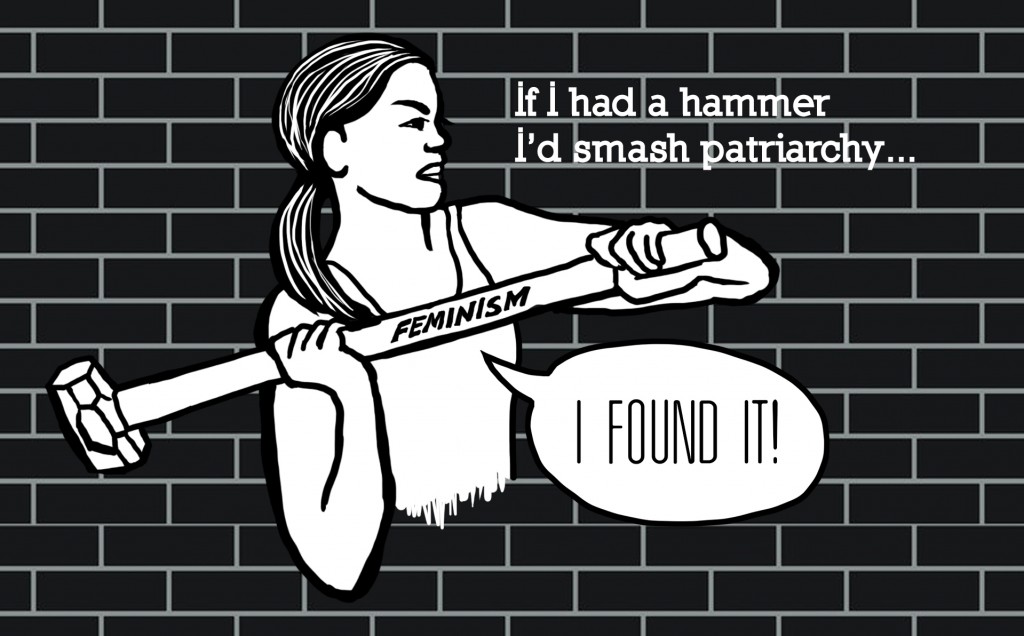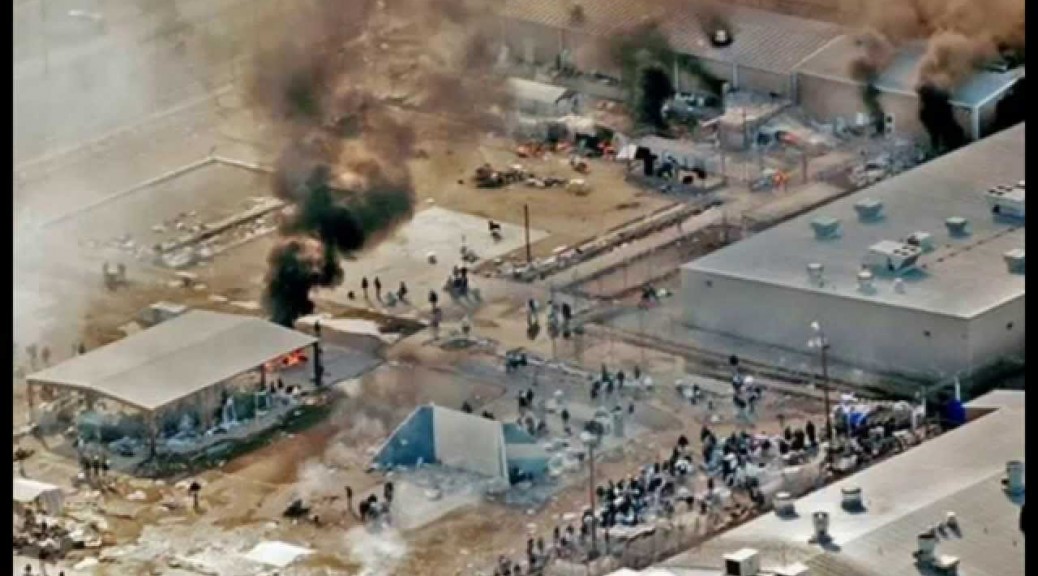de Eve Mitchell; traducido por CM de We’re Hir We’re Queer
Read English version here
Introducción.
En los Estados Unidos, al final del siglo XX y principios del XXI, domina un conjunto específico de políticas entre la izquierda. Hoy en día, podrías entrar a cualquier universidad, a cualquiera de los numerosos blogs progresistas-izquierdistas o a cualquiera web de noticias y los conceptos de “la identidad” y “la interseccionalidad” encontrarás como la teoría hegemónica. Pero, como toda teoría, ésta corresponde a la actividad de la clase obrera contestando a la composición del capital actual. La teoría no es ninguna nube flotando sobre la clase, lloviendo reflexiones e ideas, sino, como escribe Raya Dunayevskaya, “las acciones del proletariado crean la posibilidad para que el intelectual resuelva la teoría.” (Marxismo y libertad, 114)[1]. Por lo tanto, para entender las teorías dominantes de nuestra época, hay que entender el movimiento verdadero de la clase. En este texto, voy a repasar la historia de las políticas de la identidad y la teoría de la interseccionalidad con el fin de construir una crítica de la teoría de la interseccionalidad y ofrecer una concepción marxista positiva del feminismo.
El contexto de “la identidad” y “la teoría de la interseccionalidad.”
Para entender “la identidad” y “la teoría de la interseccionalidad”, hay que entender la circulación del capital (es decir, la totalidad de las relaciones sociales de la producción en el modo actual de producción) que precedió el desarrollo de tales conceptos en los años 1960 y 1970 en los EEUU. Más específico aún, ya que “la teoría de la interseccionalidad” se desarrollaba principalmente como reacción al feminismo de la segunda ola, hay que estudiar cómo se desarrollaban las relaciones de género bajo el capitalismo.
En el movimiento del feudalismo al capitalismo, la división del trabajo por género, y luego las relaciones de género dentro de la clase, empezó a tomar una nueva forma que correspondía a las necesidades del capital. Algunas de las nuevas relaciones incluyen las siguientes:
(1) El desarrollo del salario. El salario es la forma capitalista de la coerción. Tal como lo explica Maria Mies en el libro, El patriarcado y la acumulación a escala mundial, el salario reemplazaba a la servidumbre y a la esclavitud como el método de forzar el trabajo alienado (quiere decir, el trabajo que realiza un trabajador para otra persona). Bajo el capitalismo, los que producen (los trabajadores) no poseen los medios de producción, así que tienen que trabajar por los que sí poseen los medios de producción (los capitalistas). Así pues, los obreros tienen que vender al capitalista lo único que poseen, la capacidad de trabajar, o la fuerza de trabajo. Este es un elemento clave porque los obreros no son remunerados por el trabajo vivo sensitivo – el acto de producir – sino por la capacidad de trabajar. La ruptura entre el trabajo y la fuerza de trabajo causa una falsa impresión de un intercambio equitativo de valor – al parecer, el trabajador cobra por la cantidad que uno produce, pero más bien el trabajador cobra únicamente por la capacidad de trabajar por un período determinado.
Además, la jornada laboral se divide en dos: el tiempo de trabajo necesario y el tiempo de trabajo excedente. El tiempo de trabajo necesario es el tiempo (como promedio) para que un trabajador produzca suficiente valor para comprar todo lo necesario para reproducirse (todas las cosas, desde la comida hasta un iPhone). El tiempo de trabajo excedente es el tiempo que uno trabaja más allá de lo necesario. Ya que la tasa vigente de la fuerza de trabajo (nuevamente, la capacidad de trabajar – no el trabajo vivo en sí) es el valor de todo lo que un trabajador necesita para reproducirse, el valor que genera el trabajo excedente va directamente hacia los bolsillos del capitalista. Digamos que yo trabajo en una empresa de los Furby. Cobro $10 por día por 10 horas del trabajo, produzco 10 Furby diariamente, y cada Furby se vende por $10. El capitalista me paga por la capacidad de trabajar una hora diaria para producir suficiente valor para reproducirme (1 Furby = 1 hora de trabajo = $10). Así, el tiempo de trabajo necesario es una hora y el tiempo del trabajo excedente son 9 horas (10-1). El sueldo esconde la verdad. Recuerde que, dentro del capitalismo, parece que cobramos por el valor equitativo de lo que producimos. Sin embargo, cobramos solamente por el tiempo de trabajo necesario, o la cantidad mínima necesaria para reproducirnos. Bajo el feudalismo, fue distinto y fue muy claro cuánto tiempo trabajaba cada uno por sí mismo y cuánto tiempo trabajaba por otro. Por ejemplo, si la sierva labraba la tierra cinco horas por semana para producir la comida para el señor feudal, luego el tiempo restante le pertenecía a ella. El surgimiento del salario es clave porque fue el mismo salario que impuso la división del trabajo por género.
Continue reading Soy mujer y soy humana: Una crítica marxista-feminista de la teoría de la interseccionalidad →










